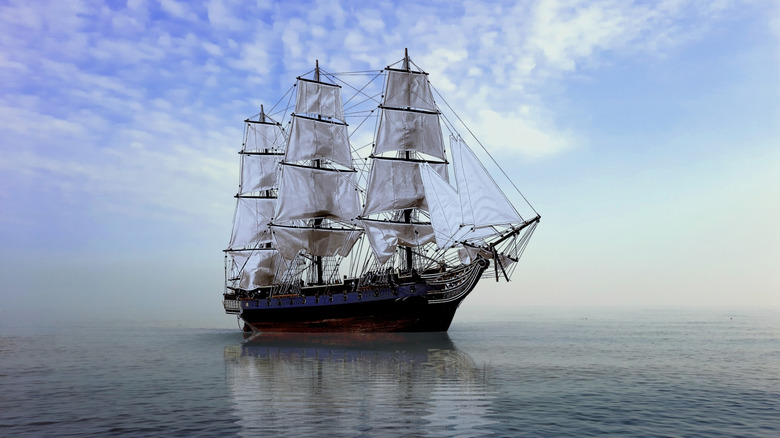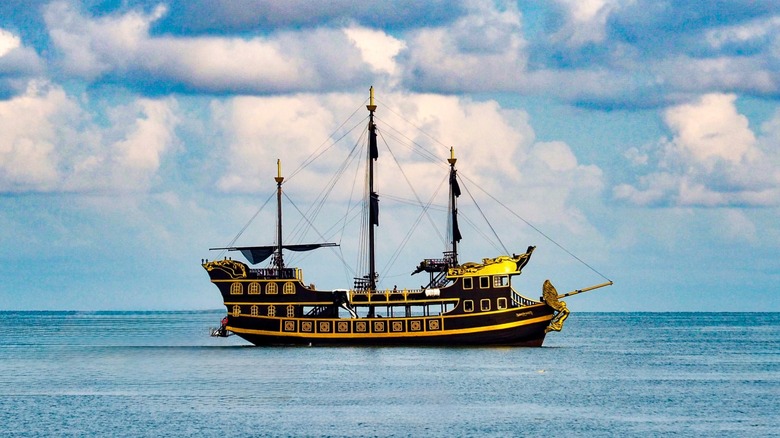How Long Did It Take A Ship To Cross The Atlantic In The 1700s?
In 1700, the United States of America as we know it today didn't exist, and neither did steam engines — but that didn't stop people from crossing to and from Europe and the Americas. Missionaries, colonists, traders, and all kinds of people sailed across the vast — and often treacherous — expanse of the Atlantic, and those journeys took a long time.
With no GPS, no accurate chronometers until 1761, and unreliable maps, sailors were forced to navigate with a compass, a sextant, celestial bodies, personal experience, and guesstimates. This meant that ships had no guaranteed arrival time when sailing to or from America and Europe. Even when navigation and charting inaccuracies didn't cause delays, the weather often did, as sailors had to deal with storms, icebergs, or fog. All of these factors could slow down progress at best, and cause fatal accidents at worst.
Of course, travel time also depended on the vessel. Factors at play included the ship's weight, hull size, and shape, but also the number of passengers and the weight of its cargo. Lighter ships of the same type traveled faster, but design was just as important. For instance, while a galleon was smaller and lighter, a heavy ship-of-the-line would have crossed the Atlantic faster — assuming similar weather — thanks to better design and more advanced engineering.
Some historians estimate that it could take around four weeks to cross from America to England, and around eight weeks to return. These are just estimates, though, and each voyage varied depending on circumstances.
What was the fastest possible time a ship could cross the Atlantic in the 18th century?
The stretch of ocean between the coast of North America and the English Channel is about 3,000 nautical miles. Frigates and similar historically significant warships typically averaged 4.5 to 6 knots per day, with those figures improving steadily from the mid-18th to early 19th century as hull designs advanced. This data suggests that, under ideal conditions, the fastest ships could make the crossing from Europe to America in about 20 to 28 days.
The reason the westbound trip was faster was that ships could ride the northeast trade winds, which blow steadily westward across the Atlantic. These winds, combined with relatively calm seas along the southern part of the North Atlantic, allowed vessels to maintain more consistent speeds throughout the journey. Although the return trip to Europe benefited from stronger westerlies farther north, the outbound route was more reliable and predictable for ships departing from ports like Portsmouth, Brest, or Amsterdam. This wind-assisted westbound path was so dependable that it became the foundation for most colonial-era shipping lanes.

